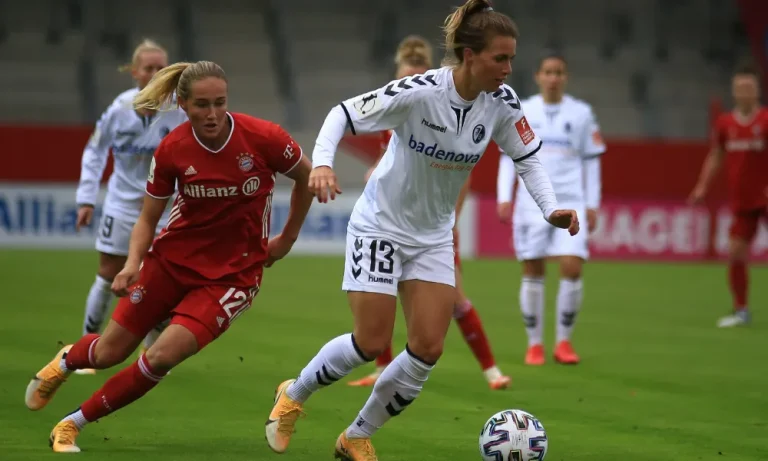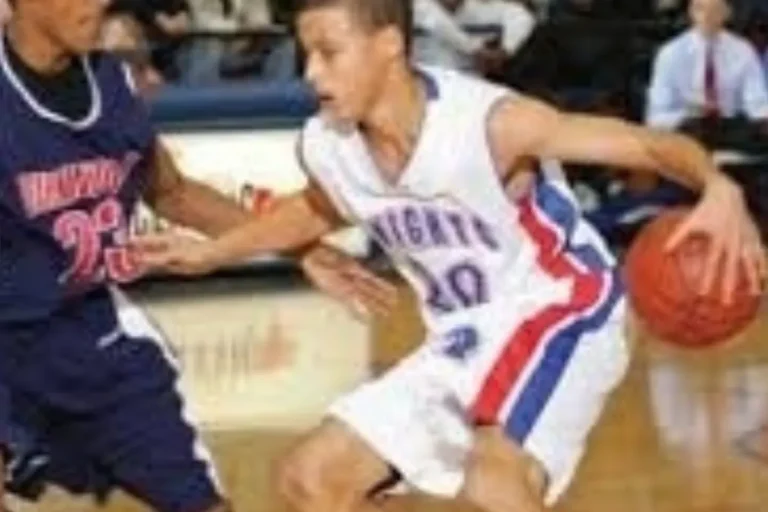What is Ginga-Style Soccer in Brazil?
What is Ginga-Style Soccer in Brazil? If you’ve ever witnessed the electrifying style of Brazilian soccer, you might have wondered what sets it apart from the rest of the world. The answer lies in the captivating artistry known as Ginga-style soccer. In this article, we’ll take a deep dive into the origins, techniques, and cultural significance of Ginga, unraveling the secrets behind its magic. From the historical roots to its modern-day presence, join us on this journey as we explore the essence of Ginga and its profound impact on Brazilian culture.
What is Ginga-Style Soccer?

Ginga-style soccer is a unique and captivating playing style that originates from Brazil. It embodies the essence of Brazilian football, characterized by its creativity, flair, and spontaneity. Ginga, a Portuguese word meaning “sway” or “to swing,” perfectly captures the fluidity and rhythm of this style.
At its core, Ginga-style soccer is rooted in the combination of skillful ball control, quick footwork, and improvisation. It emphasizes the use of the entire body, from the head to the toes, to maneuver the ball with finesse. Players exude a sense of freedom and joy as they effortlessly dance with the ball, evading opponents with mesmerizing dribbles and unpredictable movements.
What sets Ginga-style soccer apart is its emphasis on individuality and creativity. Unlike more structured playing styles, Ginga encourages players to express themselves and showcase their unique skills. It allows for improvisation and encourages players to think outside the box, making each game unpredictable and exciting to watch.
Historical Background of Ginga-Style Soccer
Tracing the roots of Ginga-style soccer takes us back to the rich history of Brazil. This captivating playing style has its origins in the influences of African heritage and indigenous culture. As the Portuguese colonizers brought African slaves to Brazil, their traditional dances and movements merged with the indigenous people’s love for ball games, giving birth to a unique fusion of styles.
The African influence brought rhythmic body movements, intricate footwork, and a deep connection between music and dance. These elements became integral to Ginga-style soccer, as players incorporated the fluidity and agility of dance into their gameplay. The indigenous people, on the other hand, contributed their natural athleticism and their passion for ball games, creating a perfect blend of skill and passion.
Early practitioners of Ginga-style soccer, such as Arthur Friedenreich and Leônidas da Silva, played a significant role in the development and popularization of this style. They showcased their exceptional skills on national and international stages, leaving a lasting impact on the game. Their agility, creativity, and ability to improvise became the blueprint for future generations of Brazilian players, who continued to evolve and refine the Ginga style.
Techniques and Skills of Ginga-Style Soccer
When it comes to Ginga-style soccer, there are several fundamental techniques that players master to showcase their creativity and finesse. Ball control lies at the heart of this playing style, with players using various parts of their body to manipulate the ball with precision. From chest traps to using the soles of their feet, Ginga players exhibit exceptional control to keep the ball close and maintain possession.
Dribbling is another crucial skill in Ginga-style soccer. Players use quick and intricate footwork to maneuver past opponents, leaving them in awe of their agility and speed. With lightning-fast changes in direction, feints, and body swerves, Ginga players can effortlessly navigate through tight spaces and create scoring opportunities.
What sets Ginga-style soccer apart is the emphasis on creativity, improvisation, and flair. Players are encouraged to think outside the box and unleash their unique skills on the field. Whether it’s a cheeky backheel pass, a mesmerizing elastico move, or an audacious nutmeg, Ginga players constantly surprise and entertain with their innovative and unpredictable play.
The Role of Ginga-Style Soccer in Brazilian Culture
Ginga-style soccer holds immense cultural significance in Brazil, as it is deeply intertwined with the nation’s identity. It represents the spirit of Brazilian football, embodying the country’s passion, creativity, and joy for the game. Ginga reflects the Brazilian way of life, where music, dance, and celebration are integral parts of the culture.
Ginga-style soccer has become a symbol of Brazilian identity, showcasing the unique characteristics of its people. The fluid and graceful movements on the field mirror the rhythmic dances and vibrant energy found throughout Brazil. It is a testament to the country’s diverse cultural heritage, blending African, indigenous, and European influences into a distinct style of play.
Role models and iconic players have emerged over the years, epitomizing the essence of Ginga-style soccer. Legends like Pelé, Zico, Ronaldinho, and Marta have captivated the world with their exceptional skills and mesmerizing flair. Their performances have inspired generations of Brazilian players to embrace Ginga, ensuring its legacy lives on.
Ginga-Style Soccer in Modern Brazilian Football
In contemporary Brazilian football, Ginga-style soccer continues to have a prominent presence, albeit with some notable changes. The style has evolved and adapted to the demands of professional leagues, where tactical discipline and physicality play a significant role alongside individual flair.
Modern Brazilian players have incorporated elements of Ginga into their game, blending creativity with strategic awareness. They combine the artistry of Ginga with refined technical skills, making them versatile and effective in various positions on the field. This evolution ensures that Ginga-style soccer remains relevant and influential in the modern game.
However, there are challenges and potential threats to the preservation of Ginga-style soccer. The globalization of football has led to increased exposure to different playing styles and tactical approaches. As a result, there is a risk of diluting the distinctiveness of Ginga and losing its essence in the pursuit of conforming to international standards.
Additionally, the commercialization and professionalization of the sport have put pressure on players to prioritize results over individual expression. The emphasis on winning and conformity can sometimes overshadow the freedom and creativity that Ginga represents. It is crucial to strike a balance that allows players to showcase their skills while still adhering to team objectives.
How to Incorporate Ginga-Style Soccer into Your Game
If you’re interested in incorporating Ginga-style soccer into your own playing style, here are some practical tips to get you started. First and foremost, focus on improving your ball control and creativity. Practice dribbling exercises that involve quick changes of direction, close ball control, and flair, allowing you to emulate the fluid movements of Ginga.
To further enhance your skills, engage in drills that encourage improvisation and freestyle play. Set up small-sided games where you can experiment with different moves, tricks, and feints. This will help you develop your own unique style while incorporating elements of Ginga into your game.
To deepen your understanding of Ginga-style soccer, explore available resources and further reading. Books, articles, and documentaries about Brazilian football and its iconic players can provide valuable insights into the history, techniques, and mindset behind Ginga. Studying the game’s rich cultural context will help you appreciate the true essence of Ginga and its significance in Brazilian culture.
FAQs
What is Ginga-style soccer in Brazil?
Ginga-style soccer is a distinctive playing style in Brazil known for its fluidity, creativity, and individual flair. It emphasizes improvisation, quick footwork, and the ability to deceive opponents with unexpected moves.
What are the key characteristics of Ginga-style soccer?
Ginga-style soccer is characterized by its emphasis on skillful dribbling, close ball control, quick changes of direction, and an intuitive understanding of space. It values creativity, improvisation, and the ability to adapt to different situations.
How does Ginga-style soccer differ from other playing styles?
Ginga-style soccer stands out for its unique blend of artistry and athleticism. Unlike some more structured styles, it encourages players to express themselves individually, relying on instinct and creativity rather than rigid tactics.
Who are some famous Brazilian players associated with Ginga-style soccer?
Brazilian legends like Pelé, Ronaldinho, and Neymar are often associated with Ginga-style soccer. They showcase the style’s characteristics through their exceptional technical skills, dribbling ability, and the ability to create magic on the field.
How does Ginga-style soccer contribute to Brazilian football culture?
Ginga-style soccer is deeply ingrained in Brazilian football culture, reflecting the country’s passion for the game. It represents the joy, freedom, and creativity associated with football in Brazil, making it a defining element of the nation’s football identity.
Conclusion
What is Ginga-Style Soccer in Brazil? It is more than just a style of playing the game; it is the heartbeat of Brazilian football. Throughout this article, we’ve explored the historical background, techniques, and cultural significance of Ginga-style soccer. It is evident that Ginga is deeply ingrained in Brazilian culture and has shaped the nation’s identity on and off the field. Let us embrace and appreciate the essence of Ginga, for it is a reminder of the beauty, creativity, and passion that make the game of soccer truly extraordinary. So, whether you’re a player or a fan, let Ginga inspire you to bring a touch of Brazilian magic to the beautiful game.




